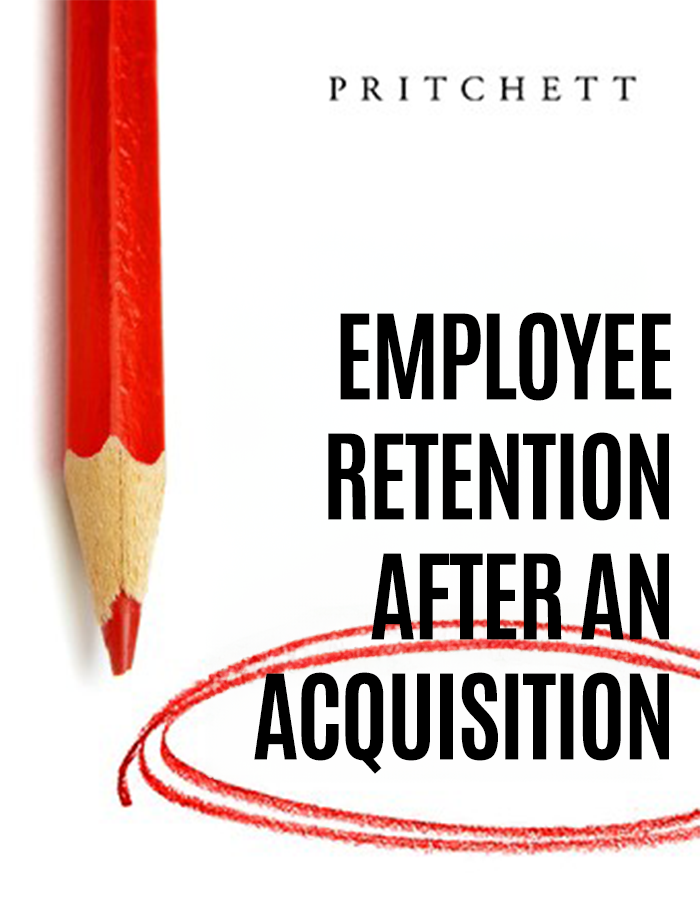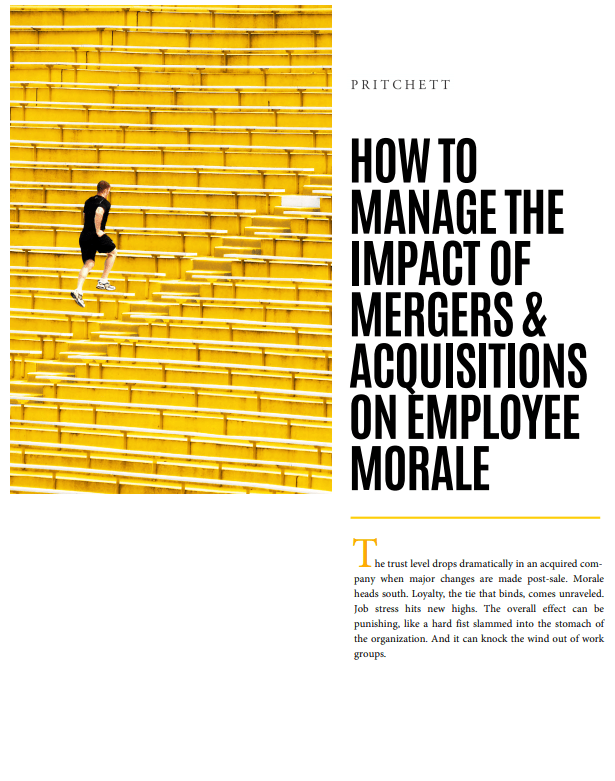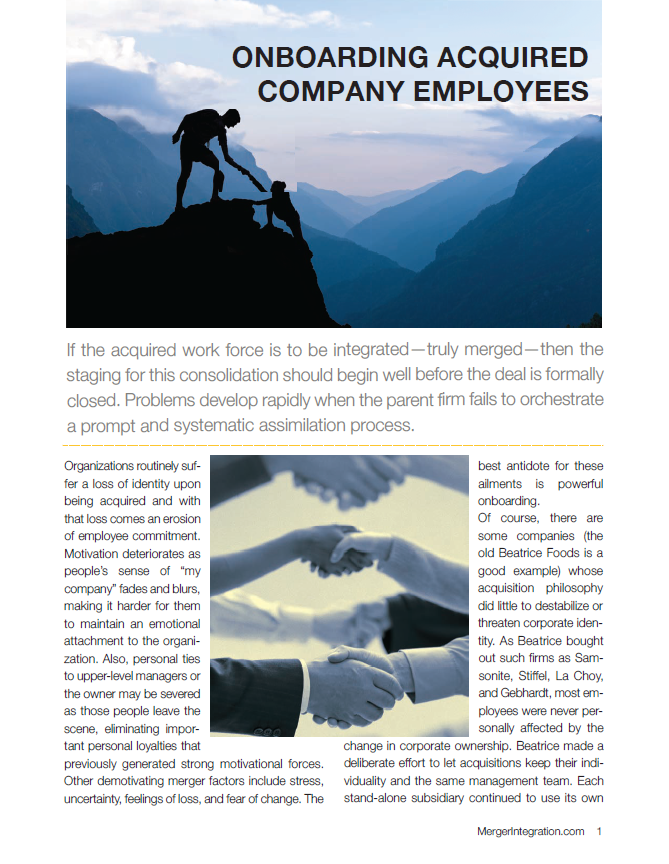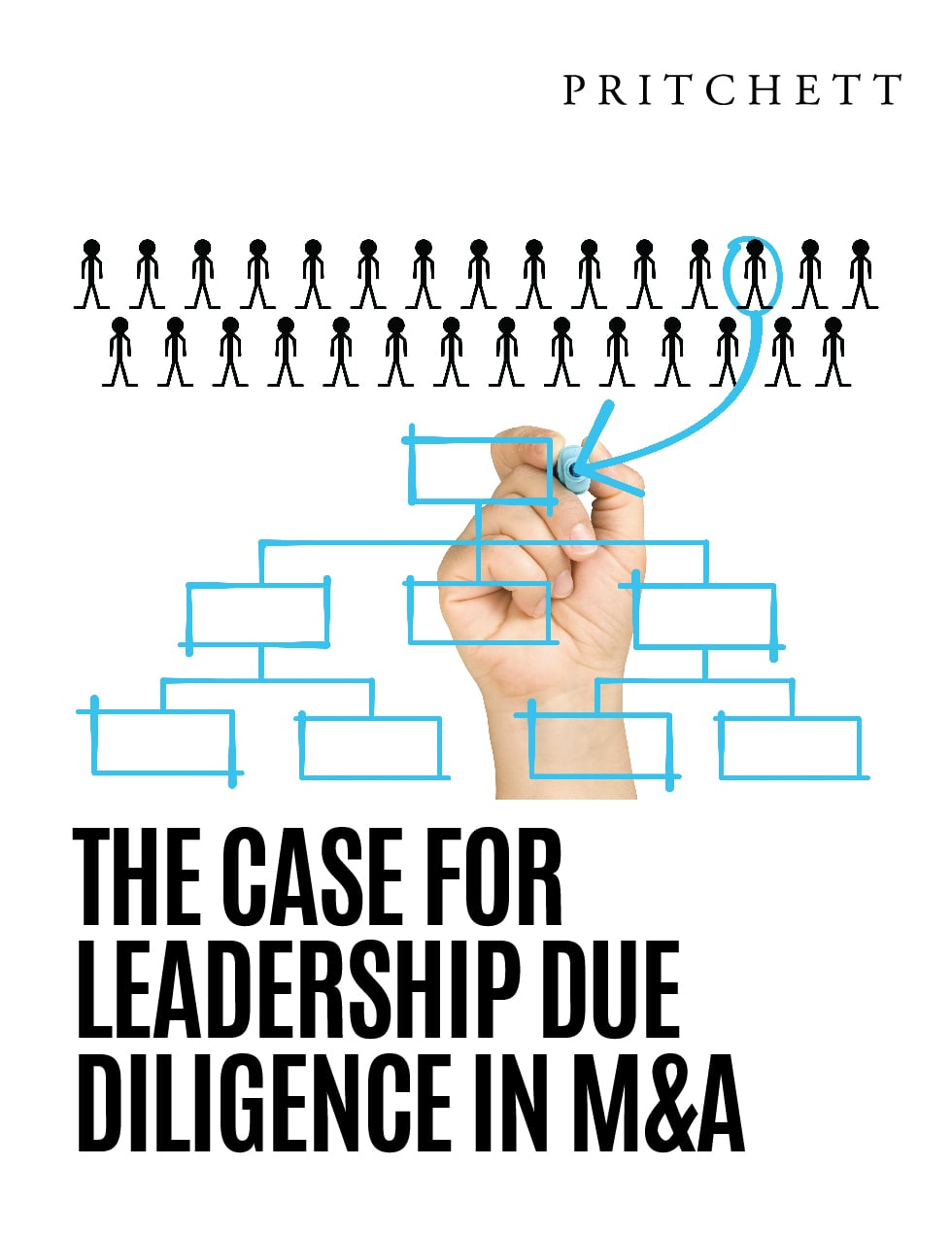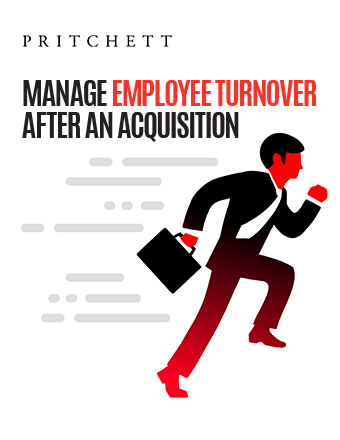Answers to Post-Merger FAQS on:
Best Practices
Communication
Day 1
M&A Integration Teams
M&A Integration Plans
Acquisition Integration
Culture
Risks
Post-Merger Exam
Based on Answers to FAQs
How should you manage employee retention during a post-merger integration?
- Make employees feel special, not taken for granted.
- Keep the communication lines open and active.
- Take the person into your confidence, asking for his or her ideas and opinions.
- Try to give the individual a key role, a special assignment that makes it clear that he or she is a highly valued individual.
- Consider giving a raise, a higher-ranking title, or a “stay” bonus.
Why should employee issues be addressed quickly after close of a merger?
Until important personal career issues have been resolved satisfactorily, employees are too preoccupied with their own situations to focus effectively on their work. Company interests take a back seat to personal interests. Employees worry, gossip, and trade rumors rather than concentrate on their jobs. The longer people have to go without closure on their “me” issues, the more likely a work group will lose momentum. Get these questions answered in a hurry, so people can get on with business.
When does employee turnover peak in an integration?
It peaks at two times in the typical merger scenario.
- The first vulnerable point is early on—during the first several weeks—when the integration process is just getting under way.
- The second exodus occurs some months later, as the new organization finally takes shape and people get an accurate sense of what it’s going to be like to work in the merged organization. Now comes the second turnover surge, as some of the people who were patient enough to “give it a shot” decide the merger hasn’t worked out in their best interests.
What are stay bonuses and do they work?
A stay bonus is an incentive paid to an employee who remains employed with a company for a certain period of time after the close of an acquisition.
Stay bonuses absolutely work. They motivate people to stay. However, it is a mistake to assume they motivate people to do good work. Near term rewards tend to focus people only on what’s immediately before them rather that what’s off in the distance. This myopic attention to short-term gains—the bonus—can lead people to make decisions not in the company’s best long-term interest.
What is a highly effective way to improve employee morale in an acquired company?
What are the key benefits of an effective M&A integration employee onboarding program?
Why is employee retention often poor after acquisitions?
There are many other competing demands for management's time, so far too often, there is virtually nothing done by way of deliberate retention, except for scattered attempts to hang on to a handful of upper-level executives. Usually, the measures taken to retain key talent are superficial, poorly coordinated, and carried out with a serious lack of urgency.
What is leadership soft due diligence?
Soft due diligence is the systematic assessment of the competencies of key leaders in the new merged organization. You should not automatically assume that people who have been successful in a pre-merger environment will perform with the same effectiveness under a new regime and in a different corporate setup. People’s strengths often become weaknesses during a merger transition period.
How should acquirers approach staffing decisions in a merger?
- Always operate with the assumption that there will be turnover which directly results from the merger.
- Plan on taking advantage of the opportunity the merger presents to get rid of marginal employees.
- Look for opportunities to consolidate and streamline for a more efficient organization.
- Move rapidly to retain good employees.
It’s much easier to succeed with a team comprised of quality players that you deliberately select rather than try to win a game with those who randomly show up to play.
What percentage of employees in an acquired company usually support the deal?
We are talking in generalities here, but about 20 percent of the employees in the acquired company will be “merger-friendly.” They will be clear advocates who embrace the deal. They will help drive the program. Another 50 percent will be fence sitters. They will initially assume an impartial stance trying to determine which way to lean. They will not be openly opposed to the merger, but they will not be helping like they should. The remaining 30 percent will be resisters. They oppose the combination and will try to make it flop.

